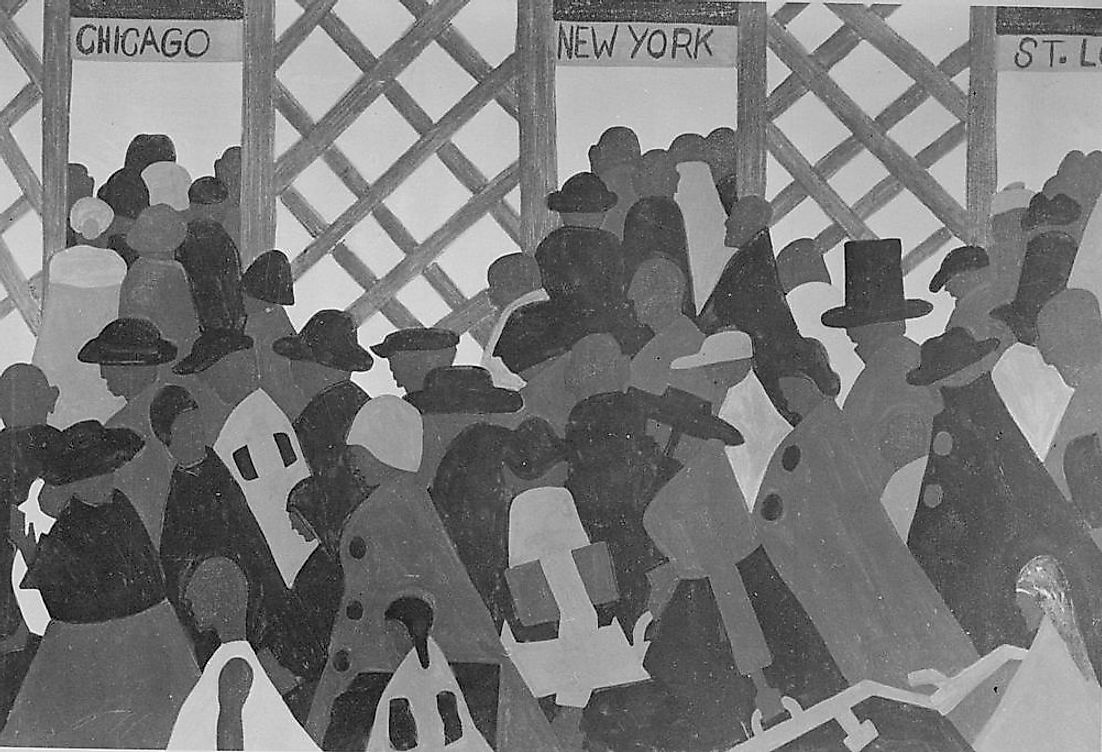What Happened During The Great Migration Of African-Americans?

The Great Migration was a relocation of African-Americans from the rural south of the United States to the cities of Northeast, Midwest, and West between 1910 to 1970. More than 90% of the African-American population lived in Southern America before 1910. By 1900, fewer than 25% of the African-Americans were reported to have been living in urban areas. However, by the end of the Great Migration, over 80% of African-Americanw had moved to urban areas, the majority of which were in the North. The majority of the African-Americans were driven out of the rural areas by the low economic opportunities and discriminatory segregationist laws.
The Great Migration Pattern
The Black Migration began at the start of the new century with over 200,000 leaving in the first decade. However, the numbers increased with the onset of the World War I and progressed throughout the 1920s. By 1930, over one million southerners had relocated to different regions before the Great Depression of the 1930s led to the closure of several industries in the North, leading to a significant reduction in the migration. The second round of the Great Migration began around 1940 with about 1.5 million African-American moving north followed by another one million in the 1950s, and a further 2.5 million people in the 1960s and early 1970s. The Great Migration came to an end in the late 1970s with the setting in of deindustrialization in the Rust Belt Crisis. The Black Americans migrated from the 14 states in the south, most notably Mississippi, Alabama, Texas, and Georgia. In the first wave of migration, eight major urban cities attracted a majority of the African-Americans including New York, Chicago, Detroit, and Indianapolis. Other destinations such as the West Coast cities attracted the second wave of migration. There was a clear migratory pattern during the Great Migration that linked particular cities and states in the South with the corresponding destination in the North. Many African-Americans also migrated into Canada.
Causes Of The Great Migration
The Great Migration from the South to the North was triggered by the increased segregation, widespread racist ideologies, and lynching that claimed about 3,500 lives between the 1880s and 1960s. Lack of social and economic opportunities in the South also triggered the Great Migration to the North. Lack of adequate labor force in the northern factories as a result of the World War I created more opportunities in the north as well. The labor agents were subsequently forced to recruit southern workers with the companies of the North offering incentives to encourage African-American to relocate to the north.
Effects Of The Great Migration
The Great Migration significantly lowered the rural black population in the South, reducing the population growth in the region. The increasing number of the African-Americans in the north changed the population dynamics of large cities. However, racism was still heavily prevalent, even within the urban environment of northern cities. Residential discrimination in particular was rampant with white homeowners preventing migrants from purchasing or renting apartments in their neighborhood with a concept known as blockbusting.







